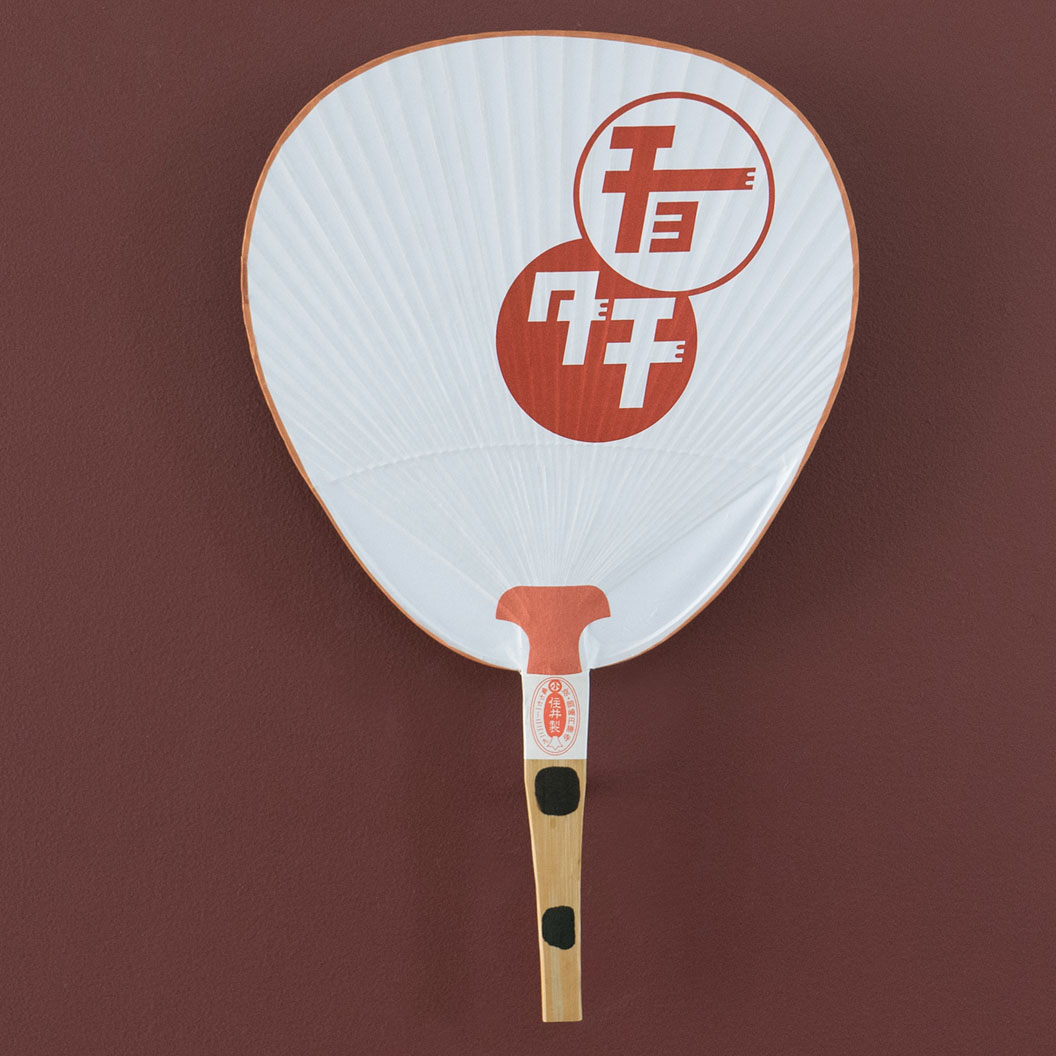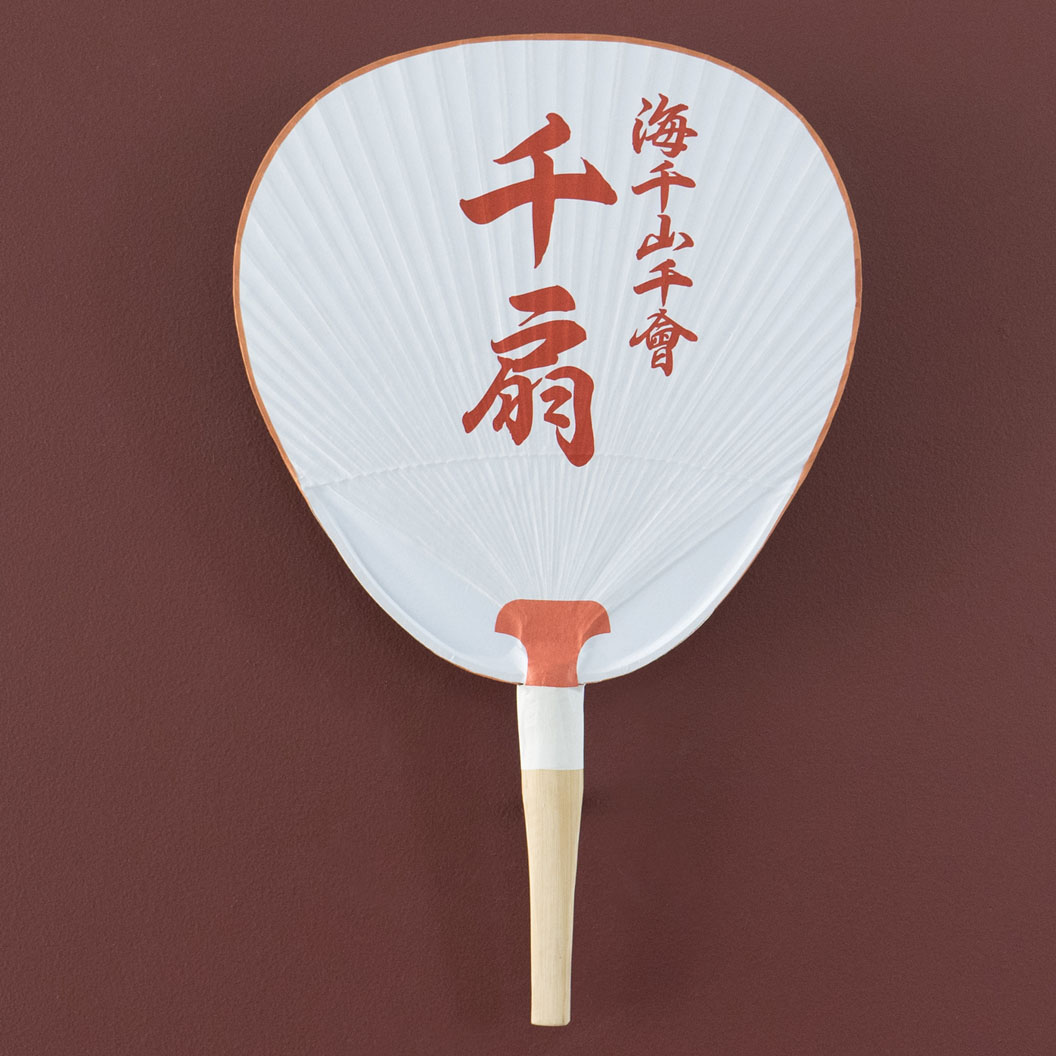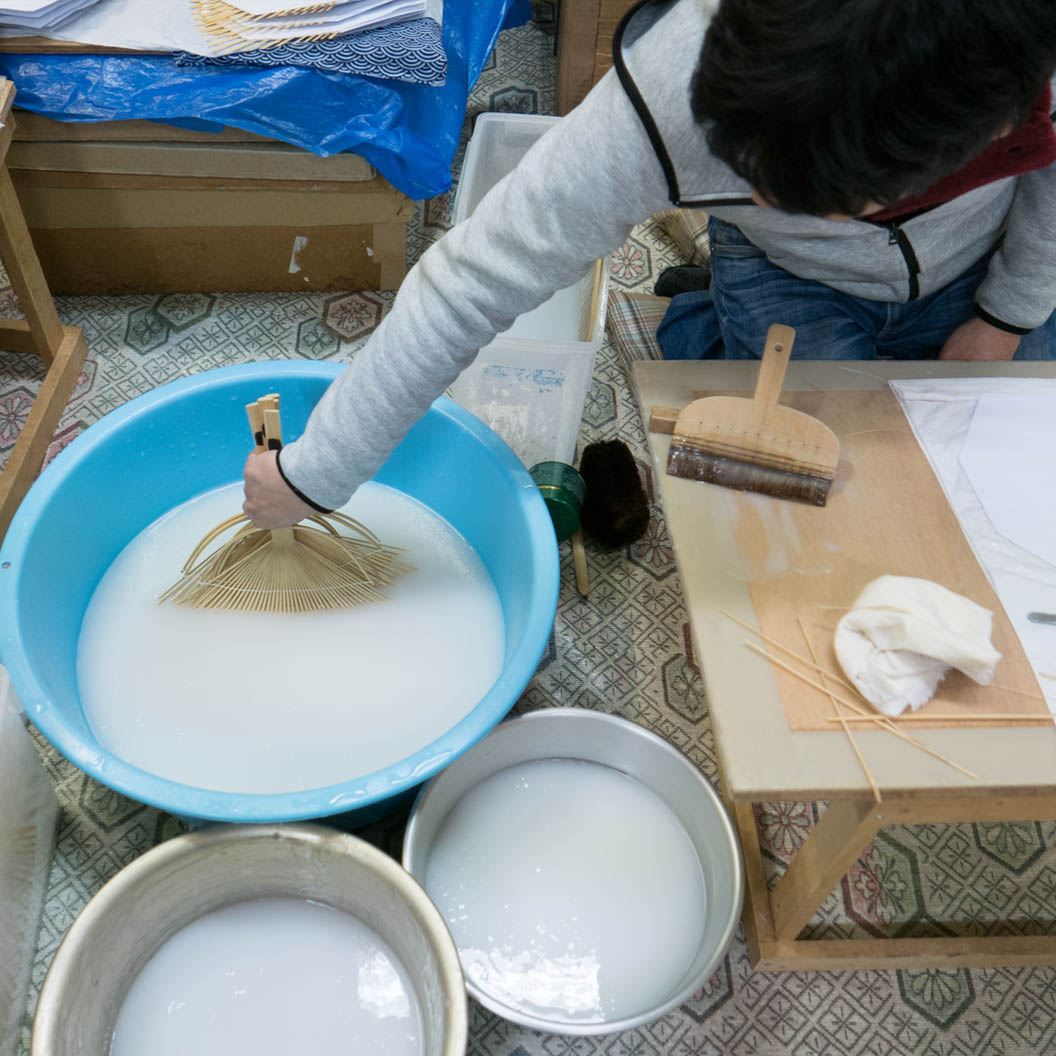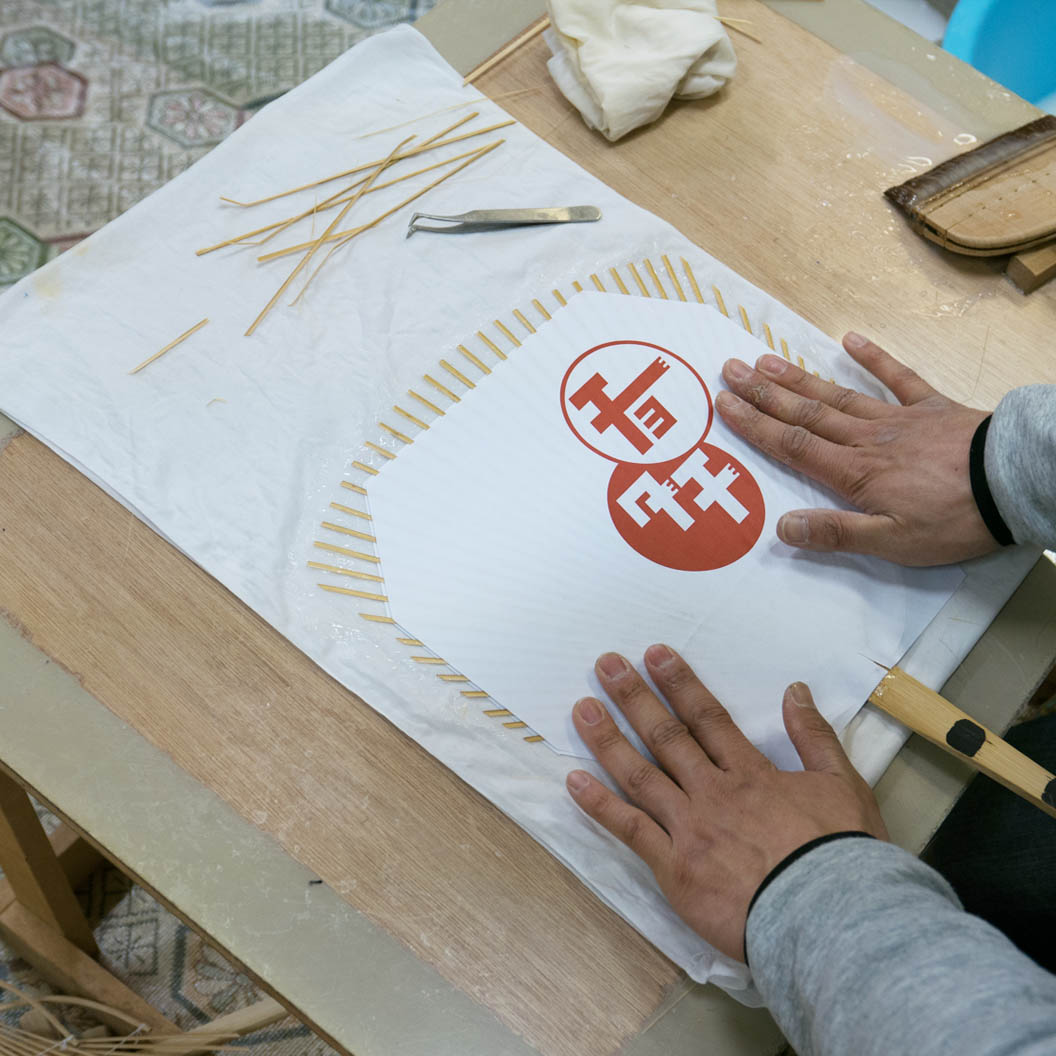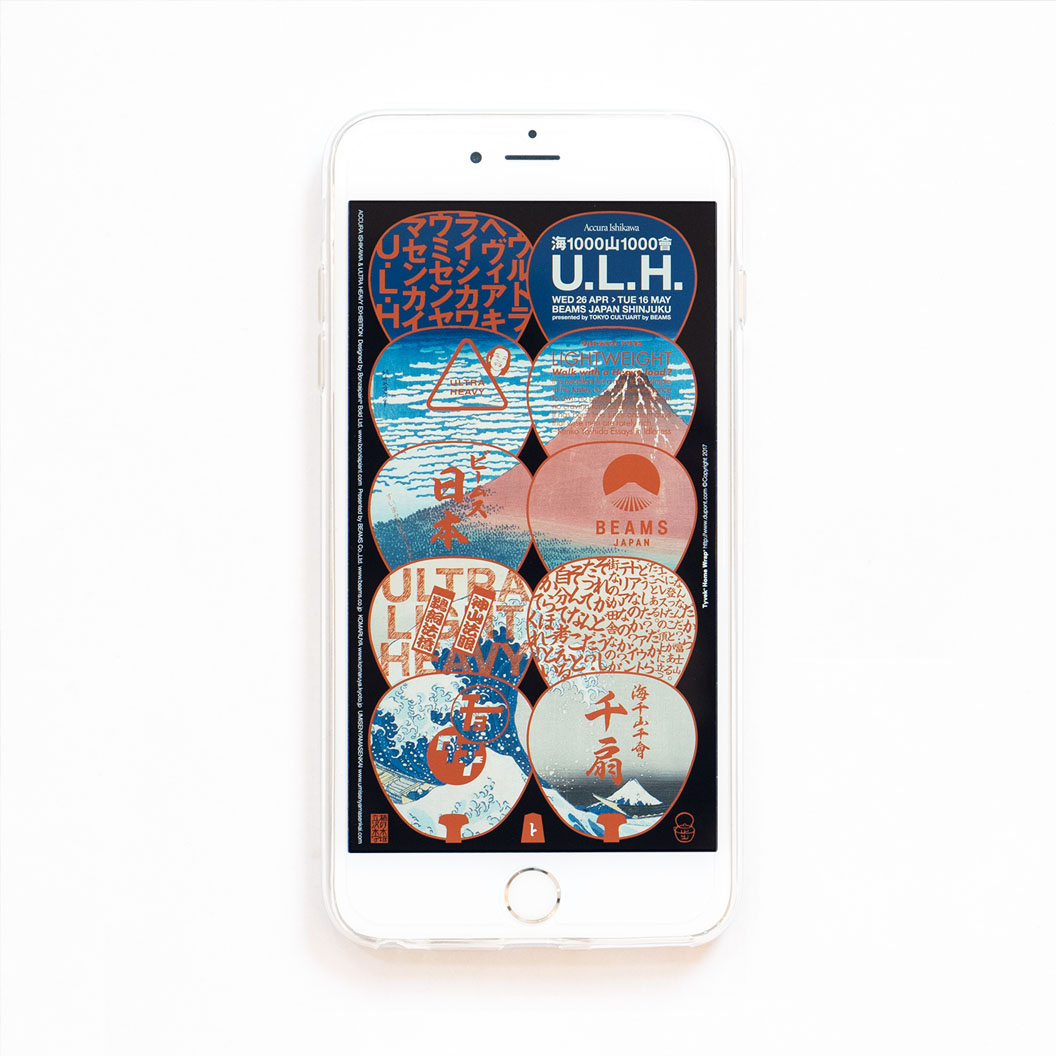Kyomaru Uchiwa “Chisen” from Yamashiro (Special edition)山城
京丸うちわ 千扇(ちせん)

住井家が時の帝より「伏見深草の真竹を使い、団扇作りを差配せよ」との命を受け、
天正年間に確立したのが深草うちわ。ー小丸屋住井より
天正(旧暦1573〜1592)は、織田信長が足利義昭を京都から追放し室町幕府を事実上滅亡させた
ことから始まる。武田信玄と上杉謙信の死、石山合戦、天正遣欧少年使節、本能寺の変、大茶会、
清洲会議、関白豊臣秀吉、九州征伐、バテレン追放令、刀狩令、天正大地震、小田原征伐、利休
自害、文禄の役と日本が最も激動した二十年間。中世が幕を閉じて近世が始まった時代といえる。
中世まで権威の象徴として貴族や僧侶が威儀具として用いてきた団扇にもこの時代変化が現れ、
竹の骨と和紙を使った今日の形に近い団扇が誕生したというのは面白い。天正二十年(文禄元年)
に秀吉が自身の隠居用に築城を開始した伏見城の北、竹田、深草あたりの地に自生していた真竹
で団扇を作ったというのも桃山時代と浅からぬ縁を感じる。後陽成天皇の命だろうか。
その後団扇は量産化が進み、木版技術の向上で、図柄も発達し美的表現が見られるようになる。
そして広告の媒体とした団扇が誕生する。
京丸うちわは京都五花街の芸妓さんや舞妓さんの名が
入った団扇だ。夏のご挨拶として贔屓筋に配れれるものだから、広告と云っても粋なものとなる。
深草うちわの素直な形に花鳥風月ではなく、家紋を入れ、裏には独特な書風で名前が書かれる。
なんとも小ざっぱりしたものだが逆にそこに色気が漂うし、深草うちわに対して乙なものなのだ。
僕は京丸うちわに魅せられ、京都の竹職人に真竹でマイ団扇立てを仕立ててもらったが、これは
白洲正子の影響によるものだ。こうして京丸うちわを立てて悦に入ったところ、ふと五本のうち
一二本京丸うちわとは違う団扇を立てた方が良いような気がした。いわゆる不揃いの美しさか。
海千山千會 立沢木守
It is said that Fukakusa uchiwa fans were developed in the Tensho period, which began when the warlord Nobunaga Oda drove the reigning shogun Ashikaga Yoshiaki out of Kyoto. The next twenty years was a tumultuous period with the death of prominent figures, civil wars, international conflicts, natural disasters, as well as significant cultural events. It marked the end of the Middle Ages and the beginning of the Modern era. It was during this period of time that uchiwa, which were carried by aristocrats and priests as a symbol of power and dignity, changed to the bamboo bone and paper structure that we now use.
After that, the mass production of uchiwa began. With the improvement in wood engraving technology, drawing patterns became more elaborate. This was soon followed by another change, which was using them as an advertising medium. Kyomaru uchiwa is a type of fan engraved with the name of a geisha or maiko from Gokagai district in Kyoto. They are distributed to patrons as summer greetings, and are clearly a form of advertisement. Meanwhile, a Fukakusa uchiwa does not have images of nature on its sides. Instead, the family seal is placed on one side while the name of the owner is written on the other in unique calligraphy. It is neat and compact, but that is precisely what makes it alluring and stylish. I was drawn to Kyomaru uchiwa and I found a bamboo artist in Kyoto to create my own fan using madake, and this is because I was influenced by Masako Shirasu. I think there is asymmetrical beauty in having one or two fans that are different from the rest of the collection.


